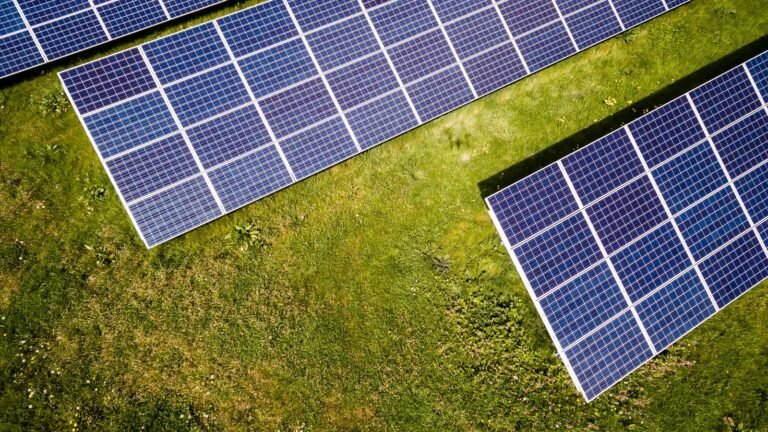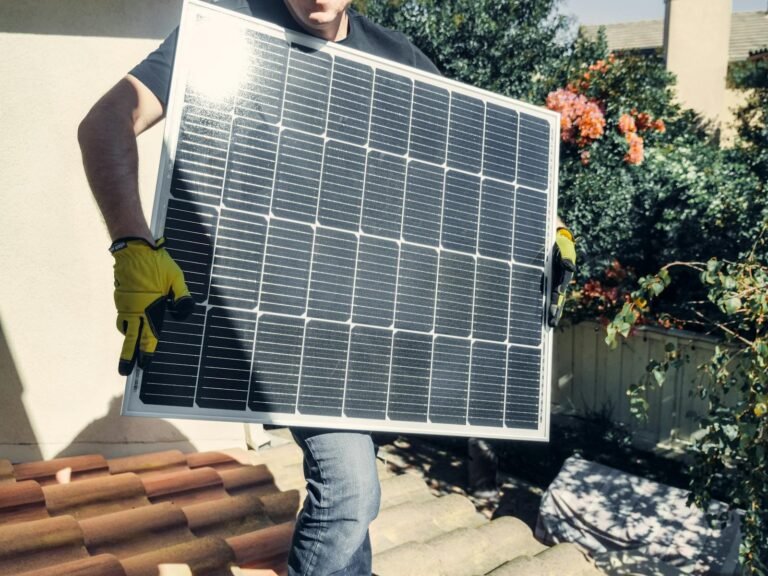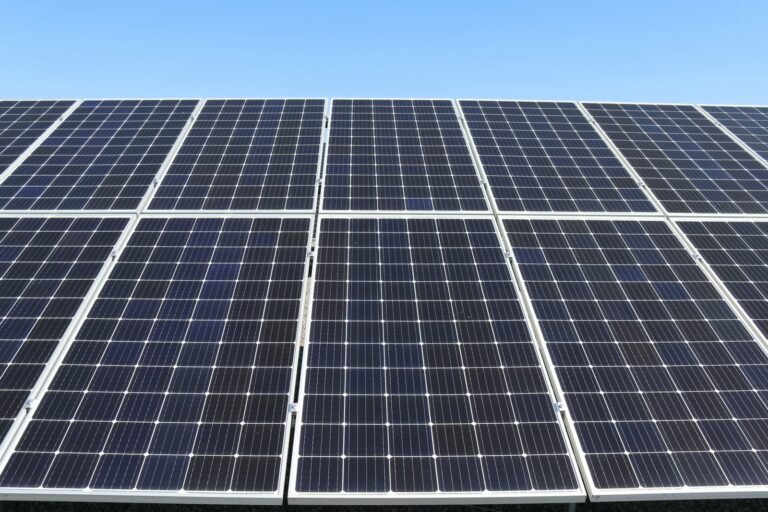What is a Solar Energy Pump?
Solar energy pumps are innovative devices that utilize solar power to facilitate fluid movement, typically for agricultural, residential, or irrigation purposes. By converting sunlight into electrical energy, these pumps operate without relying on conventional energy sources, resulting in a sustainable and cost-effective solution for water transportation needs. Solar energy pumps are especially beneficial in remote locations where access to electricity is limited or non-existent.
There are primarily two types of solar energy pumps: submersible and surface pumps. Submersible pumps are designed to be submerged in water, making them ideal for deep well applications. They effectively draw water from underground sources and transport it to the surface. Surface pumps, conversely, are located above the water source and are better suited for shallow wells or open water bodies, such as lakes or rivers. Both types can be optimized for different applications, enabling users to choose the most effective option for their specific requirements.
The common applications of solar energy pumps are vast and varied. In agriculture, these pumps are extensively used for irrigation, allowing farmers to provide consistent water supply to crops, especially in arid regions. Moreover, they contribute to increased productivity and reduced reliance on diesel generators, which not only saves costs but also minimizes environmental impact. In residential settings, solar energy pumps can supply water for household use, such as gardening or household needs. Additionally, they are increasingly being deployed in remote locations for community water supply systems, providing a sustainable and efficient solution for urban and rural populations alike.
How Does a Solar Energy Pump Work?
Solar energy pumps operate by harnessing the power of sunlight and converting it into usable electrical energy to drive water pumping systems. At the core of this technology are solar panels, which capture sunlight and transform it into direct current (DC) electricity. This process begins when solar photovoltaic (PV) cells within the panels absorb sunlight and generate electricity through the photovoltaic effect. The emitted electrons create an electric current, which is channeled toward the pump’s control system.
-Explore Solar Energy Pumps Here-
Once the solar panels generate DC electricity, the next critical component is the inverter. This device converts the DC electricity into alternating current (AC) power, which is commonly used in household and industrial settings. The inverter plays a crucial role in ensuring that the energy output matches the electrical requirements of the water pump, facilitating seamless operation. In addition to inverters, some systems may incorporate batteries to store excess energy generated during peak sunlight hours. This stored energy can be utilized when sunlight conditions are less favorable, ensuring a continuous water supply regardless of the time of day.
To maximize efficiency, solar energy pumps are often linked to a charging system that monitors and regulates energy flow. This system optimizes performance by ensuring the right balance between solar generation and the pump’s energy consumption. It also provides important feedback on energy usage and system health, allowing for maintenance and adjustments when necessary.
By integrating these components—solar panels, inverters, batteries, and charging systems—solar energy pumps deliver a reliable and sustainable solution for various applications, ranging from agricultural irrigation to powering fountains in residential landscapes. This innovative technology not only reduces dependency on fossil fuels but also contributes to lower operational costs over time, making it an essential consideration for those exploring renewable energy solutions.
Benefits of Using a Solar Energy Pump
Solar energy pumps are increasingly recognized for their numerous advantages across various applications, particularly in rural and remote settings. One of the foremost benefits is cost-effectiveness. While the initial investment in solar pump systems may be higher than traditional pumps, the long-term savings on electricity bills and maintenance costs can be substantial. With solar energy being an inexhaustible resource, users can eliminate ongoing energy expenses associated with fossil fuels.
Another significant advantage is the environmental impact of solar energy pumps. Utilizing sunlight to power these systems significantly reduces greenhouse gas emissions compared to conventional energy sources. This aligns with the growing emphasis on sustainable practices and the urgent need to mitigate climate change. By adopting solar pumps, users not only contribute to a cleaner environment but also support the transition to renewable energy sources. -Explore Solar Energy Pumps Here-
Energy independence is also a prominent benefit of solar energy pumps. Many areas, especially those far from urban centers, face challenges related to energy accessibility. By harnessing solar power, users can achieve energy autonomy, ensuring consistent water supply regardless of grid connectivity. This feature makes solar pumps particularly appealing for agriculture and irrigation, where reliable access to water is crucial for productivity.
Furthermore, solar pumps offer exceptional practicality in off-grid scenarios. They can be installed easily and require minimal maintenance, providing a reliable solution without the complexities of connecting to a conventional utility grid. This practicality is especially beneficial for rural communities, enabling them to cultivate land and access water resources effectively.
In conclusion, the benefits of solar energy pumps are manifold, ranging from cost savings and environmental conservation to energy independence and practicality. Their increasing popularity highlights a shift towards embracing sustainable water solutions in various sectors.
Is a Solar Energy Pump Worth It?
Investing in a solar energy pump can be a significant financial decision, and a clear cost-benefit analysis is essential to determine its worth. Initial installation costs tend to be higher compared to traditional pumps, primarily due to the advanced technology and the solar panel setup required. On average, homeowners and businesses can expect to spend between $2,000 to $10,000 for a complete solar energy pump system, which might seem daunting initially. However, this expense is balanced by the long-term savings on energy bills, especially in areas where electricity costs are high.
One of the biggest advantages of a solar energy pump is the reduction in energy costs. Unlike conventional pumps that rely on grid electricity, solar pumps utilize renewable energy, thereby eliminating monthly electricity bills associated with water pumping. Over time, these savings can offset the initial installation costs, often leading to a break-even point within five to seven years, depending on energy use and local electricity rates.
In addition to direct savings, potential government incentives and subsidies considerably enhance the financial appeal of solar energy pumps. Many jurisdictions offer tax credits, rebates, and other financial incentives to encourage the adoption of renewable energy technologies. These incentives can substantially reduce the out-of-pocket costs of installation, making solar pumps even more attractive to homeowners and businesses.
Real-life case studies support the view that the investment in solar energy pumps pays off. For instance, a local farmer switched to a solar-powered irrigation system, resulting in nearly 50% savings on his water pumping costs. Additionally, the farmer benefited from a government rebate that reduced his installation costs by 30%, demonstrating the practical advantages this technology offers.
With careful consideration of installation costs, long-term savings, maintenance needs, and available incentives, it becomes evident that solar energy pumps hold significant potential for both economic benefit and environmental sustainability.
Applications of Solar Energy Pumps
Solar energy pumps are increasingly recognized for their versatility and adaptability across various sectors. One of the primary applications is in agriculture, where these pumps serve a critical role in irrigation systems. Farmers can harness solar power to maintain a consistent water supply, especially in remote regions where traditional electricity sources may be unreliable or unavailable. These pumps effectively support the irrigation of crops, thereby enhancing agricultural productivity while reducing dependency on fossil fuels.
In residential settings, solar pumps have gained popularity for supplying clean water for household use. Many homeowners implement solar pumping systems for various purposes, such as providing water for gardens, filling swimming pools, or supplying domestic needs. The installation of solar energy pumps in residences reflects a sustainable choice, reducing monthly utility bills and minimizing environmental impact by utilizing renewable energy sources.
Beyond agriculture and residential use, solar energy pumps are also employed in specific industries. In aquaculture, these pumps are vital for maintaining water circulation and quality in fish farms. The sustainable and efficient nature of solar-powered systems allows aquaculture operators to enhance productivity while ensuring a lower carbon footprint. Similarly, in landscaping, solar pumps play a fundamental role. They are used to create beautiful water features, such as fountains and ponds, by efficiently transporting water while preserving the natural ecosystem. -Explore Solar Energy Pumps Here-
The adaptability of solar energy pumps extends beyond these applications, making them suitable for various settings and conditions. With advancements in technology, the reliable operation of these systems in fluctuating environments is assured, ensuring they meet diverse water supply needs across multiple sectors. By integrating solar pumps into agricultural practices, residential installations, and specific industries, users are contributing to a sustainable future while reaping the benefits of using renewable energy.
Can You Run a Solar Pump Directly from a Solar Panel?
The integration of solar pumps with solar panels represents a sustainable approach to water management in various applications, such as agriculture, livestock watering, and residential water systems. However, one common question arises: can you run a solar pump directly from a solar panel? The answer is not straightforward and entails several technical considerations.
Directly connecting a solar pump to a solar panel is possible, but it requires careful attention to voltage matching. Solar panels generate direct current (DC) electricity, and many pumps are designed to operate with specific voltage inputs. Therefore, ensuring that the voltage output of the solar panel aligns with the input requirement of the pump is crucial. For instance, a typical solar panel may output around 12-24 volts, while the pump must be compatible with this range. Utilizing multiple panels in series or parallel configurations can help achieve the desired voltage and current specifications.
Moreover, running a pump directly from a solar panel can lead to operational challenges. One primary concern is the pump’s dependency on sunlight. During cloudy days or at night, the lack of sunlight may cause the pump to underperform or cease operation altogether. This can result in inefficient water delivery, particularly in scenarios where consistent water supply is essential. To address this issue, it is advisable to incorporate a solar charge controller and battery storage system. These components can help regulate the power output and ensure a more stable supply of energy to the pump, safeguarding against periods of inadequate sunlight.
Incorporating these technical considerations will enhance the feasibility of using solar pumps directly connected to solar panels. Users contemplating this option should weigh the advantages and potential complications to determine the best approach for their specific needs.
Challenges and Limitations of Solar Energy Pumps
While solar energy pumps offer numerous advantages, they also present certain challenges and limitations that users must consider. One significant issue is their dependency on weather conditions. Solar energy is inherently reliant on sunlight; therefore, regions with frequent cloud cover, rain, or prolonged periods of darkness may experience fluctuating performance or reduced efficiency. This can lead to inconsistent water supply, particularly in agricultural applications where reliable irrigation is crucial.
The initial setup complexity is another factor to consider. Installing a solar energy pump system may require specialized knowledge to ensure optimal performance and proper integration with existing infrastructure. Users often face a steep learning curve, as well as potential delays in obtaining necessary permits or equipment. Additionally, the upfront costs associated with purchasing solar panels, batteries, and other components can be substantial. Although long-term savings are a consideration, the initial financial investment might deter some users from adopting this technology.
Maintenance concerns are also important. Solar energy pumps necessitate regular maintenance to ensure longevity and reliability. Users must be vigilant about cleaning solar panels, checking connections, and inspecting pump components for wear and tear. Neglecting maintenance can lead to reduced efficiency, increased operational costs, or even complete system failure over time. Furthermore, while solar technology has advanced, the requirement for adequate sunlight and optimal placement remains a critical consideration in system design.
These challenges underscore the importance of comprehensive planning and evaluation before committing to a solar energy pump system. Potential users should weigh these limitations against the benefits to determine whether this sustainable solution aligns with their specific needs and conditions.
Future Trends in Solar Pump Technology
The landscape of solar pump technology is rapidly evolving, driven by advancements in related fields and the increasing significance of renewable energy sources. One of the most prominent trends is the continuous improvement in solar panel efficiency. Modern solar panels are becoming more efficient at converting sunlight into electricity, thanks to innovations in photovoltaic materials and designs. This enhanced efficiency allows for the installation of smaller solar arrays that can generate more power, making solar pumping systems increasingly viable for diverse applications, from agriculture to residential water supply.
Another key area of development involves advancements in battery storage systems. As solar energy generation is contingent on sunlight availability, effective battery storage is crucial for ensuring a consistent power supply. Recent improvements in battery technology, including the use of lithium-ion and next-generation solid-state batteries, are paving the way for solar pumps to operate autonomously, even during periods of low sunlight. This greater reliability enhances the practicality of solar pumping solutions, encouraging wider adoption across various sectors. -Explore Solar Energy Pumps Here-
Additionally, the integration of smart technology into solar pumping systems is markedly on the rise. With the advent of the Internet of Things (IoT), solar pumps can now incorporate sensors and automated controls that optimize their operation. This allows for real-time monitoring and adjustment based on environmental conditions and water demand, ultimately leading to improved energy efficiency and resource management.
Looking ahead, as global market trends increasingly prioritize renewable energy sources, the demand for solar pumping solutions is expected to grow significantly. Governments and private sectors are also investing in research and development, which will likely result in more innovative and sustainable technologies for solar pumps. These future trends indicate a robust trajectory for solar pumps, highlighting their essential role in establishing a more sustainable energy landscape.
Conclusion: Making an Informed Decision
As we have explored throughout this blog post, solar energy pumps present a variety of functional advantages that cater to different needs. These pumps harness solar power, offering a sustainable and efficient solution for numerous applications such as irrigation, livestock watering, and more. The benefits of utilizing solar pumps include significant savings on energy costs, reduced environmental impact compared to conventional pumps, and the ability to operate in remote locations where electricity is not readily available.
However, making an informed decision regarding the adoption of solar energy pumps requires a careful consideration of individual circumstances. Factors such as budget constraints, geographical location, and specific usage requirements must all play a role in one’s decision-making process. For instance, the upfront investment for solar pumps may vary based on the size and specifications needed for particular applications, and potential buyers should weigh the long-term savings against initial costs. Additionally, geographic factors such as sunlight availability can influence the efficiency and reliability of solar-powered systems.
Moreover, understanding the specific energy needs of your operation is crucial when selecting the right solar pump. Users should assess the flow rates, system capacity, and the potential for energy production. It is also beneficial to stay informed about any incentives, rebates, or financing options that might be available to assist with the transition to solar technology.
In conclusion, solar energy pumps offer a pathway to greener and more cost-effective solutions for water management and various applications. To navigate this decision effectively, prospective users are encouraged to conduct thorough research, considering all the elements discussed. By doing so, individuals can make informed choices that align with their needs and contribute to a sustainable future.
-This Page Contains Affilaite links to Amazon Deals-



